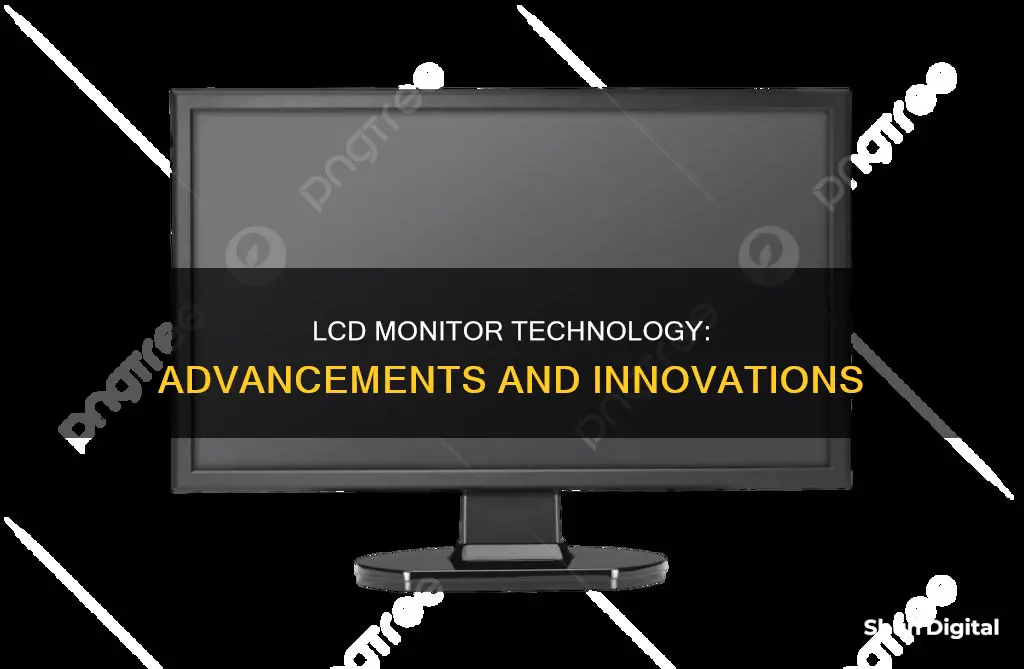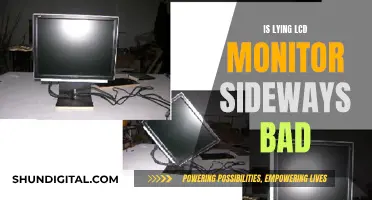
LCD monitors have become a common feature of modern life, used in everything from televisions to smartphones. But what is it that makes them work? LCD stands for liquid crystal display. This technology uses liquid crystals, which have properties of both liquids and solids, to create images on a screen.
LCD monitors are made up of two pieces of polarised glass, with a liquid crystal material between them. A backlight then creates light that passes through the first piece of glass. An electric current is applied, which aligns the liquid crystals to allow or block light, creating the images you see on the display.
There are two types of LCD technology: active matrix and passive matrix. Active matrix is the most common, using a thin film transistor (TFT) to arrange tiny transistors and capacitors in a matrix on the glass of the display. Passive matrix, on the other hand, uses a grid of conductive metal to charge each pixel. While this is cheaper to produce, passive matrix monitors are rarely used today due to their slow response time and imprecise voltage control.
What You'll Learn

Twisted Nematic (TN) Panels
TN panels use liquid crystals that twist and untwist at varying degrees to allow light to pass through. When no voltage is applied to a TN liquid crystal cell, polarised light passes through the 90-degree twisted LC layer. As the voltage is increased, the liquid crystals untwist, changing the polarisation and blocking the light's path. By adjusting the voltage, almost any grey level or light transmission can be achieved.
TN panels are often backlit by cold cathode fluorescent lamps (CCFLs), although modern TN panels are increasingly using LED backlighting.
Asus 360Hz Monitor: Release Date and Specs
You may want to see also

In Panel Switching displays (IPS Panels)
In-Plane Switching (IPS) monitors are one of the four main panel types, alongside TN, VA, and OLED. IPS panels are defined by the shifting patterns of their liquid crystals, which are aligned in parallel to produce rich colours. IPS monitors were designed to overcome the limitations of TN panels, which have narrow viewing angles and poor colour accuracy when viewed from an angle.
IPS panels are sandwiched between two glass surfaces, with the liquid crystal molecules aligned parallel to those surfaces in predetermined directions. The molecules are reoriented by an applied electric field, while remaining essentially parallel to the surfaces to produce an image. This technology was designed to solve the strong viewing angle dependence and low-quality colour reproduction of the twisted nematic field effect (TN) matrix LCDs prevalent in the late 1980s.
IPS monitors are known for their superior colour accuracy and consistency, offering outstanding colour performance and super-wide viewing angles of up to 178 degrees. This makes them ideal for colour-critical professional applications such as graphic design, CAD engineering, professional photography, and video editing. They also have a faster response time than TN panels, making them a popular choice for gamers who value image quality over response time.
IPS panels have a few drawbacks, including a below-average static contrast ratio, potential white glow from off-angles when viewing dark content, and more motion blur than TN monitors. They also require up to 15% more power than TN panels and are more expensive to produce.
IPS technology is widely used in panels for TVs, tablet computers, and smartphones. Examples include IBM products marketed as Flexview from 2004 to 2008 and all Apple Inc. products with the label Retina Display since 2010.
LCD Monitors: Illuminating the Screen Source
You may want to see also

Vertical Alignment Panels (VA Panels)
VA panels are one of the most popular types of liquid-crystal display (LCD) technologies on the market. You can find TVs, computer monitors, tablets and other display devices that feature a VA LCD.
VA panels have an average refresh rate of 60 to 120 Hz, meaning they change their image 60 to 120 times per second. They also offer excellent viewing angles, meaning that even when sitting or standing to the side, you can still view them.
However, VA panels are more susceptible to motion blur than other types of display devices. Motion blur is a visual phenomenon that involves fuzzy, distorted images due to movement. It won't damage the VA LCD, but it can still degrade the image quality.
Another potential disadvantage of VA LCDs is uneven lighting. VA panels require backlighting and don't have self-illuminating pixels. This can result in some areas of the screen being bright, while others are dim.
Monitor Size Guide: 40-Inch Displays' Dimensions Explained
You may want to see also

Active Matrix displays
The concept of active-matrix LCDs was first proposed by Bernard J. Lechner at the RCA Laboratories in 1968, and the term "active matrix" was coined by T. Peter Brody in 1975. Active Matrix displays offer several advantages over Passive Matrix displays, including superior image quality, faster response times, and better viewing angles. This is because each pixel in an Active Matrix display is individually controlled by its own transistor, allowing for direct control of each pixel and enabling faster response times. The individual transistors ensure that each pixel maintains its state until the next refresh cycle, resulting in sharper and more stable images.
The most common type of Active Matrix display contains a matrix of thin-film transistors in addition to the polarizing sheets and cells of liquid crystal. These devices store the electrical state of each pixel on the display while all the other pixels are being updated, providing a much brighter and sharper display than a Passive Matrix display of the same size. Active Matrix displays also have a wider color gamut and faster response time than Passive Matrix displays.
Enlarging Your Monitor Display: Simple Steps to Increase View Size
You may want to see also

Passive Matrix displays
Passive Matrix addressing is an addressing scheme used in early LCDs. It is a matrix addressing scheme, meaning that only m + n control signals are required to address an m × n display. A pixel in a passive matrix must maintain its state without active driving circuitry until it can be refreshed again.
Monitoring Data Usage: Strategies for Effective Data Management
You may want to see also
Frequently asked questions
LCD stands for Liquid Crystal Display, and LED stands for Light-Emitting Diode. All LED monitors are a type of LCD monitor, but not all LCD monitors use LED technology. LCD monitors use liquid crystals to control light passage, whereas LED monitors use light-emitting diodes for backlighting.
LCD monitors are typically thinner, more energy-efficient, and cheaper than LED monitors. They also have more consistent lighting across the screen. However, they struggle to produce true blacks and may not be as good for gaming due to their slower response times.
LED monitors offer superior picture quality, with better contrast ratios, deeper blacks, and more precise lighting control. They also have faster response times, making them ideal for gaming. However, they are more expensive than LCD monitors.
There are three main types of LCD monitors: TN (Twisted Nematic), VA (Vertical Alignment), and IPS (In-Plane Switching). TN panels are the most common and offer the fastest response times, but poorer colour reproduction and fewer viewing angles. VA panels offer a balance between colour reproduction, viewing angles, and response time. IPS panels are known for their excellent colour accuracy and wide viewing angles, but have slower response times.







